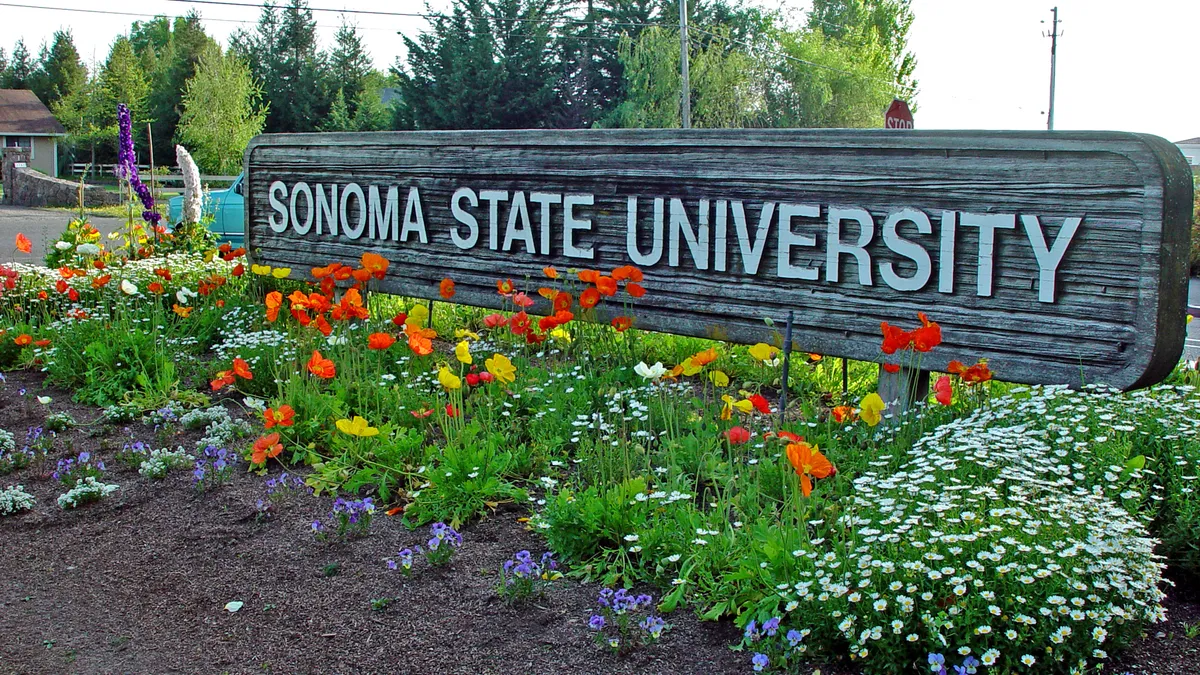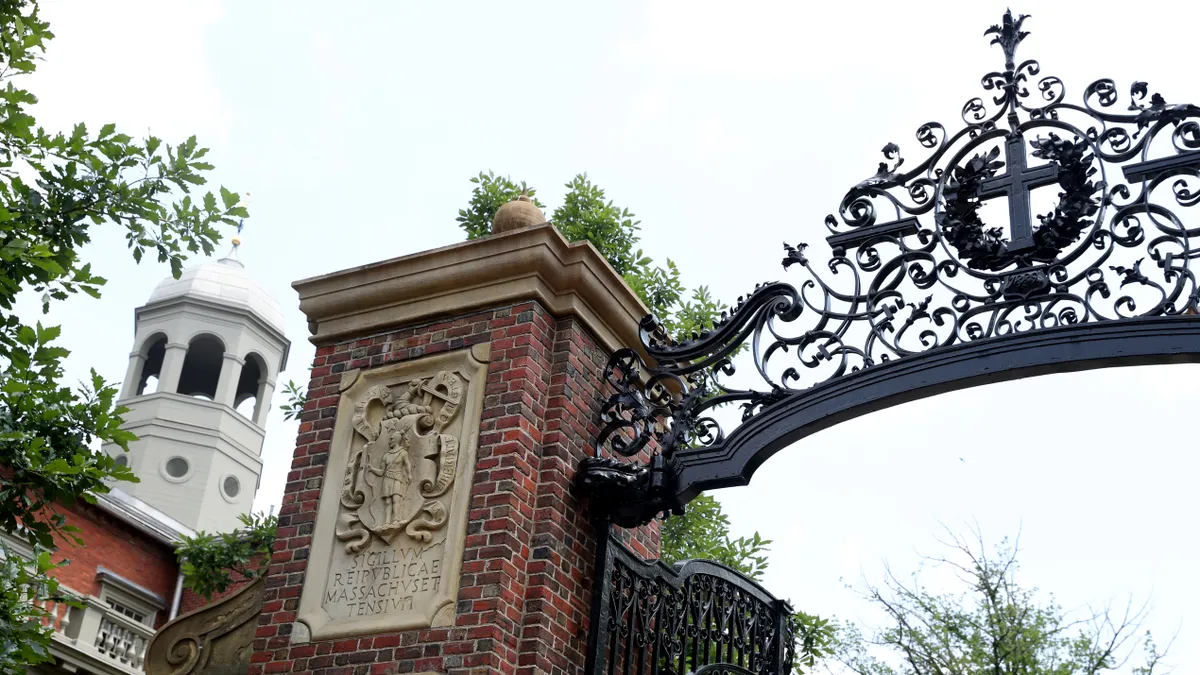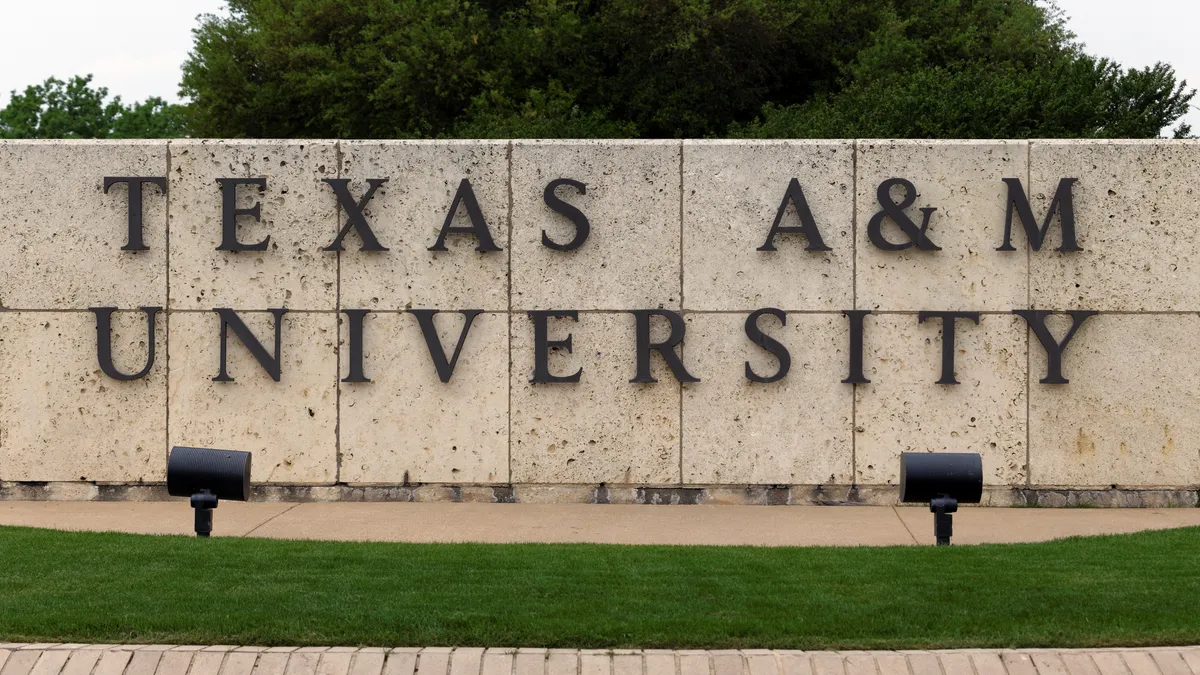Starting next academic year, Colby-Sawyer College will be decreasing tuition, but it’s not just shaving a few hundred dollars off its sticker price. The college is cutting its price from $46,364 to $17,500, a drop of more than 60%.
The move, said President Susan Stuebner, is intended to make more students consider attending the private New Hampshire college.
“We really recognize the need for transparency in pricing and we’re trying to align the published price more closely with what students currently pay,” she said. “Higher education has been on this trajectory of high-price, high-discount, and it’s incredibly confusing for families and prospective students.”
Several colleges and universities have recently reset their tuition. Experts say it may help a college’s bottom line, depending on the type of institution.
Most students don’t pay college sticker prices, as institutions discount depending on their own financial needs, a family's ability to pay and what admissions offices perceive as a student's academic merit. In a recent study of more than 350 private, nonprofit colleges by the National Association of College and University Business Officers, first-time undergraduates received an average discount of nearly 55% off the advertised price. Though tuition has risen more than 9% in the past decade, net tuition after discounting has remained relatively flat.
Of 800-plus undergraduates at Colby-Sawyer last year, not one actually paid the sticker price. That helped officials consider discounting.
The institution has also seen its enrollment fall over the last decade, from 1,414 in fall 2012 to 855 in fall 2019, although it ticked back up to 910 the next year, according to federal data.
“Our price was one of the more expensive in New Hampshire and in New England, so one of the questions we had was how many students are we missing out on having conversations with that would be a great fit for Colby-Sawyer?” Stuebner said.
Making costs clear
There’s evidence that colleges may be missing out on students who dismiss institutions because of their advertised cost. In a recent study by Sallie Mae, 81% of students said they eliminated colleges based on price before even applying, meaning they had no knowledge of what they would actually pay after discounting and financial aid.
“We don’t expect enormous growth in the number of first-year students that we’ll be bringing in, but we do expect some incremental growth, and that will certainly help our bottom line,” Stuebner said.
Lasell University, a private college in Massachusetts, is also pursuing a reset, dropping the combined price of tuition and room and board next academic year to $39,500, down from $59,130.
Before the change, that price was inching close to the $60,000 mark, said Chrystal Porter, Lasell’s vice president of enrollment and marketing.
“Families, especially middle-class families, when they see certain tuition, they just aren’t considering us as an institution, as well as a number of our peers,” Porter said.
Private colleges aren’t the only institutions resetting tuition.
In Vermont, the creation of a new public university has become an opportunity to lower prices. Castleton University, Northern Vermont University, and Vermont Technical College are merging to become the new Vermont State University, which will have a significantly lower sticker price than the average at the original institutions.
Tuition will be $9,999 per year for in-state students, down 15% from an average of $11,808 at the merging institutions. Tuition will be about 33% percent lower for out-of-state students as well, dropping from $29,836 to $19,998 per year.
And more institutions are trying to make real costs clear to students and families before they apply, even if they're not resetting tuition, said Lucie Lapovsky, an economist and higher education consultant. She worked with Colby-Sawyer on its tuition reset.
“If you go to schools’ websites you see more and more ways they’re trying to let students know that they’re not going to pay the full price, and some are more explicit about it than others,” she said. “Most schools other than the very elite are struggling to meet enrollment goals, and price is one of the factors that keeps students from attending schools.”
The potential pitfalls of a tuition reset
There are reasons that not every college chooses to reset their tuition, said Sue Menditto, senior director of accounting policy at the National Association of College and University Business Officers. At some colleges, she said, officials may fear that lowering tuition could cheapen the value of the education in the eyes of students and families who equate price with quality.
“The fear is always, ‘What if we reset and they don’t come?’” Menditto said. “‘Maybe we won’t be viewed as a legitimate, valuable, higher education institution.’”
Then, there is the prospect of actually getting more students to attend. Although it seems to make sense that more students would enroll at a lower price, that may not be true for every college.
Lapovsky has collected data on 30 institutions that reset tuition between 2013 and 2018. Institutions in her data set on average saw a 9.6% increase in applications, 2.5% increase in first-year enrollment, and 12.1% increase in transfer students the year of the reset.
However, over the next few years, things slowed down slightly. In the third year of the reset, compared to the year prior to the reset, applications increased 6.5% and transfers increased by nearly 5.7%, but first-year enrollment fell 1.1%.
Lapovsky said resetting tuition is not the right decision for every college. At institutions where a significant number of students pay the full or close to full price, resetting tuition could mean a loss in revenue. Some administrations may also believe their students respond more to high scholarships.
But for Stuebner at Colby-Sawyer, the choice was clear.
“The pattern of higher education being on this trajectory of high-price, high-discount has just gotten so confusing for families. We’re really doing a disservice to them,” she said. “And they’re starting to push back.”






















